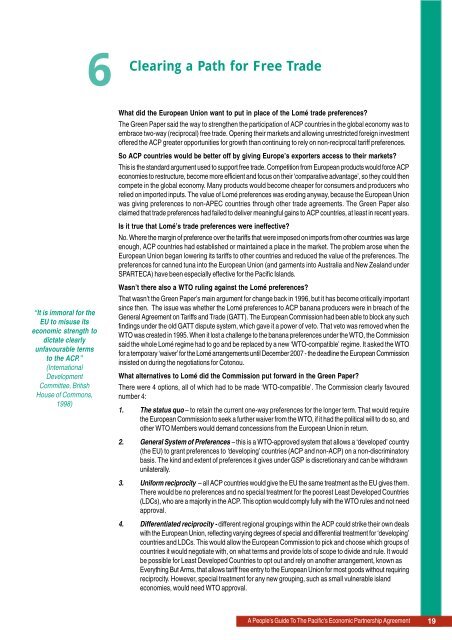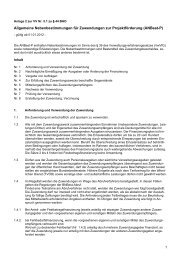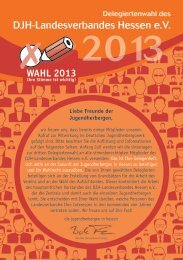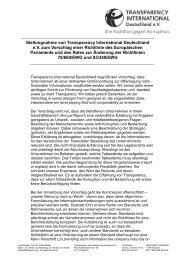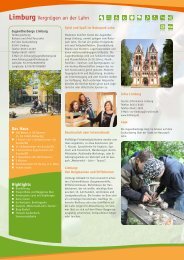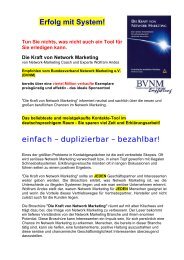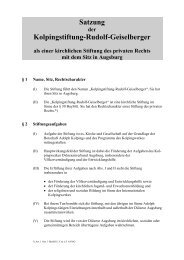REPA Booklet - Stop Epa
REPA Booklet - Stop Epa
REPA Booklet - Stop Epa
Create successful ePaper yourself
Turn your PDF publications into a flip-book with our unique Google optimized e-Paper software.
6<br />
Clearing a Path for Free Trade<br />
What did the European Union want to put in place of the Lomé trade preferences?<br />
The Green Paper said the way to strengthen the participation of ACP countries in the global economy was to<br />
embrace two-way (reciprocal) free trade. Opening their markets and allowing unrestricted foreign investment<br />
offered the ACP greater opportunities for growth than continuing to rely on non-reciprocal tariff preferences.<br />
So ACP countries would be better off by giving Europe’s exporters access to their markets?<br />
This is the standard argument used to support free trade. Competition from European products would force ACP<br />
economies to restructure, become more efficient and focus on their ‘comparative advantage’, so they could then<br />
compete in the global economy. Many products would become cheaper for consumers and producers who<br />
relied on imported inputs. The value of Lomé preferences was eroding anyway, because the European Union<br />
was giving preferences to non-APEC countries through other trade agreements. The Green Paper also<br />
claimed that trade preferences had failed to deliver meaningful gains to ACP countries, at least in recent years.<br />
Is it true that Lomé’s trade preferences were ineffective?<br />
No. Where the margin of preference over the tariffs that were imposed on imports from other countries was large<br />
enough, ACP countries had established or maintained a place in the market. The problem arose when the<br />
European Union began lowering its tariffs to other countries and reduced the value of the preferences. The<br />
preferences for canned tuna into the European Union (and garments into Australia and New Zealand under<br />
SPARTECA) have been especially effective for the Pacific Islands.<br />
“It is immoral for the<br />
EU to misuse its<br />
economic strength to<br />
dictate clearly<br />
unfavourable terms<br />
to the ACP.”<br />
(International<br />
Development<br />
Committee, British<br />
House of Commons,<br />
1998)<br />
Wasn’t there also a WTO ruling against the Lomé preferences?<br />
That wasn’t the Green Paper’s main argument for change back in 1996, but it has become critically important<br />
since then. The issue was whether the Lomé preferences to ACP banana producers were in breach of the<br />
General Agreement on Tariffs and Trade (GATT). The European Commission had been able to block any such<br />
findings under the old GATT dispute system, which gave it a power of veto. That veto was removed when the<br />
WTO was created in 1995. When it lost a challenge to the banana preferences under the WTO, the Commission<br />
said the whole Lomé regime had to go and be replaced by a new ‘WTO-compatible’ regime. It asked the WTO<br />
for a temporary ‘waiver’ for the Lomé arrangements until December 2007 - the deadline the European Commission<br />
insisted on during the negotiations for Cotonou.<br />
What alternatives to Lomé did the Commission put forward in the Green Paper?<br />
There were 4 options, all of which had to be made ‘WTO-compatible’. The Commission clearly favoured<br />
number 4:<br />
1. The status quo – to retain the current one-way preferences for the longer term. That would require<br />
the European Commission to seek a further waiver from the WTO, if it had the political will to do so, and<br />
other WTO Members would demand concessions from the European Union in return.<br />
2. General System of Preferences – this is a WTO-approved system that allows a ‘developed’ country<br />
(the EU) to grant preferences to ‘developing’ countries (ACP and non-ACP) on a non-discriminatory<br />
basis. The kind and extent of preferences it gives under GSP is discretionary and can be withdrawn<br />
unilaterally.<br />
3. Uniform reciprocity – all ACP countries would give the EU the same treatment as the EU gives them.<br />
There would be no preferences and no special treatment for the poorest Least Developed Countries<br />
(LDCs), who are a majority in the ACP. This option would comply fully with the WTO rules and not need<br />
approval.<br />
4. Differentiated reciprocity - different regional groupings within the ACP could strike their own deals<br />
with the European Union, reflecting varying degrees of special and differential treatment for ‘developing’<br />
countries and LDCs. This would allow the European Commission to pick and choose which groups of<br />
countries it would negotiate with, on what terms and provide lots of scope to divide and rule. It would<br />
be possible for Least Developed Countries to opt out and rely on another arrangement, known as<br />
Everything But Arms, that allows tariff free entry to the European Union for most goods without requiring<br />
reciprocity. However, special treatment for any new grouping, such as small vulnerable island<br />
economies, would need WTO approval.<br />
A People’s Guide To The Pacific’s Economic Partnership Agreement 19


